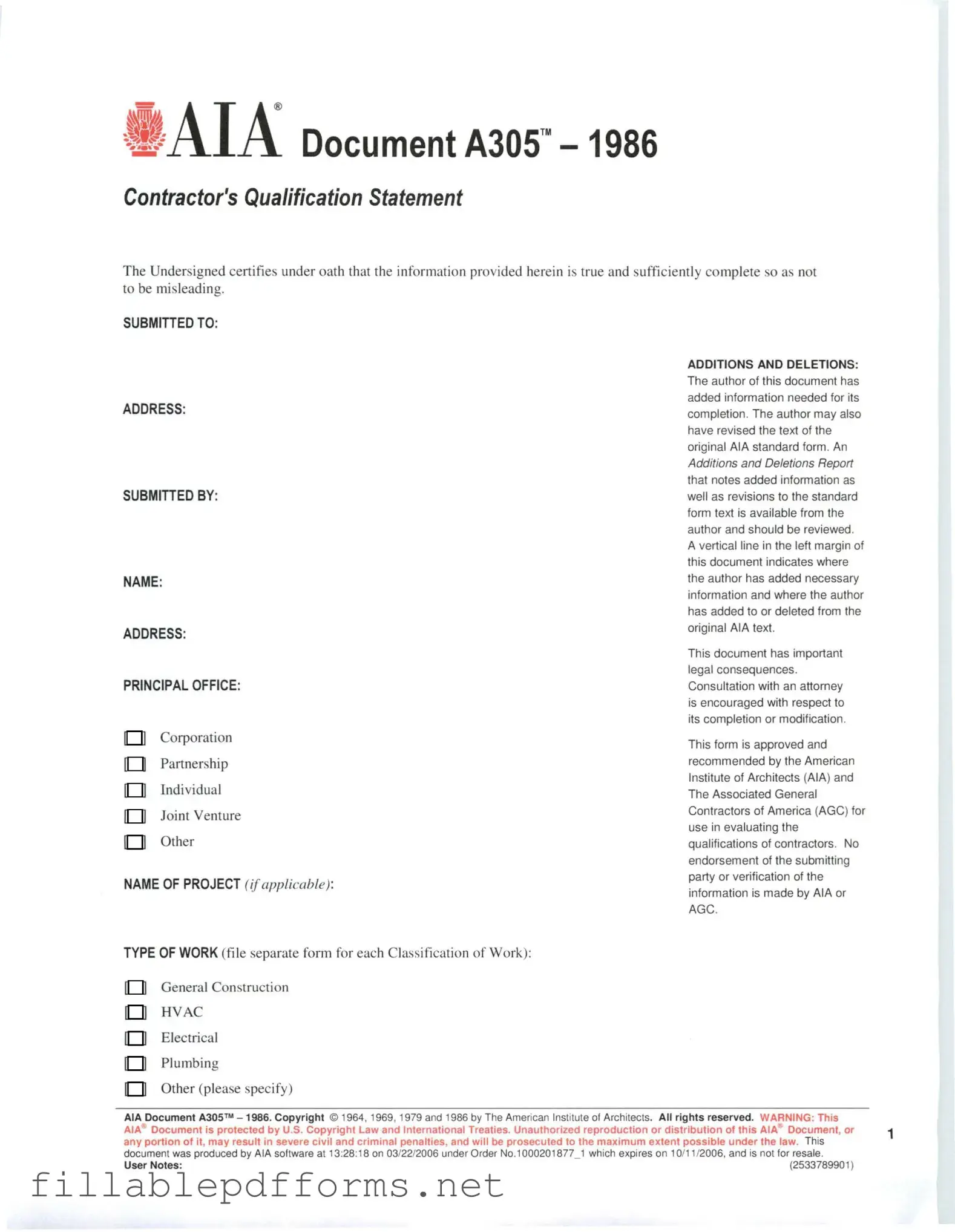The AIA A305 form is a widely used document in the construction industry, particularly for contractors seeking to provide a comprehensive overview of their qualifications. This form serves as a tool for contractors to showcase their experience, financial stability, and overall capability to undertake specific projects. It typically includes sections that require detailed information about the contractor’s history, including past projects, financial performance, and organizational structure. Additionally, the A305 form often requests data on the contractor's workforce, safety record, and any relevant licenses or certifications. By utilizing this form, owners and architects can assess the qualifications of potential contractors, ensuring that they select the most suitable candidates for their projects. The AIA A305 form not only streamlines the bidding process but also helps establish a level of transparency and trust between contractors and project owners.
